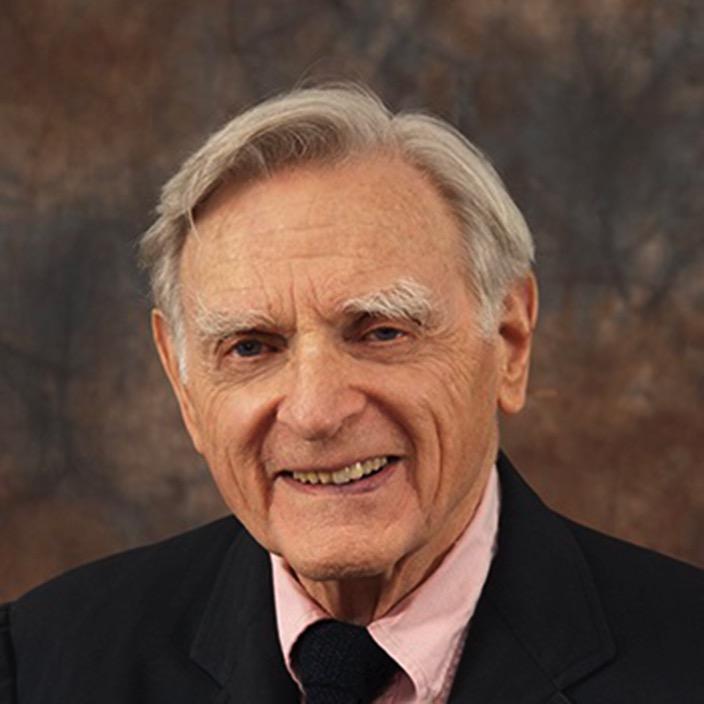
Look around in any public place and the sight is ubiquitous: people staring intently at little screens, hunched over their portable electronic devices. Materials scientist John B. Goodenough has had a starring role in that scene: he invented the rechargeable lithium-ion battery that allows us to tote these pocket-sized devices around without carrying power cables or stacks of AA batteries.
Look around in any public place and the sight is ubiquitous: people staring intently at little screens, hunched over their portable electronic devices. The development of inexpensive digital electronics is one reason, but without reliable and compact battery technology, portability is impossible. Chemists and engineers have made remarkable strides in battery innovation, but as anyone who has been forced to fruitlessly search an airport or coffee shop for an outlet can attest, the perfect rechargeable battery has yet to be invented.
For materials scientists such as John Goodenough, the challenge is finding the best combination of electrode material and electrolyte, the components that make up a battery. Goodenough is chiefly responsible for turning the closest candidate for a perfect battery, the rechargeable lithium-ion battery, into a practical reality through his discovery and development of lithium-cobalt oxide (LiCoO2) as a cathode material.
Goodenough did not start out working to build a better battery. Raised outside New Haven, Connecticut—his father was a professor of the history of religion at Yale University—Goodenough was fascinated with the natural world. Though he struggled with dyslexia as a child, he credits hard work rather than brilliance for his eventual rise from the bottom level of his class to the top level. After earning his undergraduate degree at Yale, Goodenough served as a captain in the U.S. Air Force during World War II. He returned to civilian life to study physics at the University of Chicago, earning his Ph.D. in 1952.
Goodenough began his career in America's defense research establishment at MIT's Lincoln Laboratory, where he worked on the invention of random access magnetic memory for the computers of the U.S. air defense system. That work led to his early notable contributions as he developed several key concepts in materials science, including the Goodenough-Kanamori rules for magnetic behavior in a wide range of oxide materials.
In 1976, after nearly a quarter-century at Lincoln Labs, he became chair of the Inorganic Chemistry Laboratory at the University of Oxford in the UK, where, among many other interests, he began to consider the problems of battery technology. The field had seen little innovation for decades and was undergoing something of a revival, spurred by the energy crises of the 1970s. Goodenough's previous work at Lincoln made him an expert in ceramic and metal oxide materials and, inspired by British chemist M. Stanley Whittingham's recent invention of a lithium-based metal sulfide, he began to examine such materials with an eye toward their possibilities for building better batteries.
Though revolutionary, Whittingham's lithium-titanium-disulfide device was too expensive and impractical for commercialization. Goodenough investigated transition metal oxides as an alternative to sulfide materials. When he found that lithium ions could reversibly enter and leave the structure of lithium cobalt oxide (LiCoO2), he realized he had found a practical oxide-based cathode material—the key to a rechargeable lithium-ion battery. Goodenough’s creative foresight in developing a battery that could be manufactured in an uncharged state bucked the battery manufacturing industry, which traditionally produced batteries in a charged state, and resolved the problem that lithium batteries produced in a charged state were unstable.
Further research and development followed and, in 1991, the rechargeable lithium-ion battery was commercially introduced. With its superior energy density, long life, and great versatility, it soon became the dominant choice for consumer electronics, just in time for the explosive growth in popularity and availability of cell phones, laptops, and other portable electronics. During the next decade, Goodenough identified two other materials, manganese oxide spinel and lithium iron phosphate, that could also work as battery cathode materials. Lithium-ion batteries now power essentially all the indispensable gadgets we carry around with us every day wherever we go—a phenomenon the work of John Goodenough made possible.
His contributions extend far beyond the smart phone in your pocket. Goodenough's colleagues credit him as one of the modern founders of the science of solid state chemistry. He has authored more than 800 articles and five books, and his work is cited worldwide. As a professor at the University of Texas at Austin since 1986, Goodenough has profoundly influenced solid state physics and chemistry into the 21st century through his own work and that of his students. Now, at age 95, he still keeps a full schedule of lecturing and researching, tirelessly searching for the next great advance in battery technology. His most recent invention is the glass battery, which uses glass as an electrolyte material to potentially achieve greater energy capacity and longevity, and expanded operating temperatures.
John Goodenough is one of those rare scientists whose impact on our daily lives is not only readily apparent, but absolutely indispensable. His contributions appreciably changed the way we live and, in a world ever searching for new and better energy solutions, point toward promising directions for the future.
Information as of March 15, 2018

